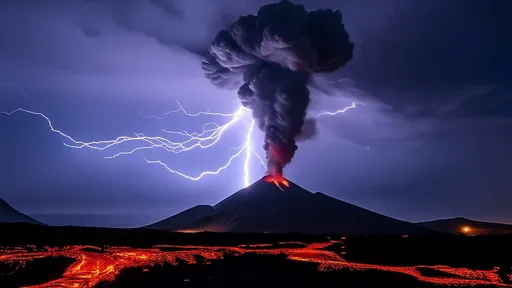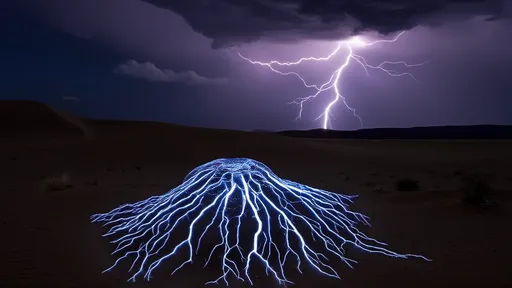The sky darkens as a towering plume of ash and superheated gas erupts from the volcano’s maw, climbing tens of thousands of feet into the atmosphere. But amid the chaos of the eruption, another phenomenon emerges—one that crackles with electric fury. This is volcanic lightning, a mesmerizing and poorly understood spectacle where nature’s most violent geological forces collide with the raw power of atmospheric electricity.
Unlike typical thunderstorms, which form from ice particles colliding in moisture-rich clouds, volcanic lightning arises from the chaotic churn of ash, rock fragments, and gases within an eruption column. As these particles violently collide, they generate static charges, much like rubbing a balloon against hair. The resulting electrical discharges can number in the thousands per eruption, illuminating the ash cloud with an eerie, flickering glow.
The mechanics behind this phenomenon remain a subject of intense study. Scientists believe that the finer the ash particles, the more frequent the lightning, as smaller particles create greater charge separation. Some eruptions, like that of Alaska’s Mount Redoubt in 2009, produced nearly continuous lightning for hours, with strikes occurring up to 20 times per second. The scale is staggering—some volcanic thunderstorms rival the energy of supercell storms, yet they originate not from weather systems, but from the Earth’s molten depths.
One of the most dramatic recorded instances occurred during the 2015 eruption of Chile’s Calbuco volcano. Satellites and ground-based observers documented over 1,000 lightning flashes in just 90 minutes, each bolt searing through the ash plume with temperatures exceeding 30,000°C. The event provided critical data, revealing that volcanic lightning often follows a two-phase pattern: an initial burst of near-vent discharges as the column first explodes upward, followed by more traditional plume lightning as the ash cloud spreads downwind.
These electrical storms aren’t merely spectacular—they serve as vital warning systems. Monitoring volcanic lightning allows researchers to track eruptions in real-time, especially valuable when ash clouds obscure visual observations. Networks like the World Wide Lightning Location Network (WWLLN) now integrate volcanic lightning detection into early-alert systems, helping aviation authorities reroute flights away from deadly ash. The 2010 Eyjafjallajökull eruption, which paralyzed European air travel, might have been managed differently with today’s lightning-tracking tech.
Yet mysteries persist. Why do some colossal eruptions produce scant lightning while smaller ones spark frenzied displays? How do magma composition and eruption style influence charge distribution? Researchers are turning to lab experiments, using volcanic ash samples and high-voltage tests to simulate nature’s most electrifying geology. Meanwhile, citizen scientists contribute by photographing eruptions, capturing transient lightning flashes that instruments might miss.
As climate change alters atmospheric dynamics and volcanic activity patterns shift, understanding these fiery thunderstorms grows ever more urgent. They are a reminder that beneath our feet—and above our heads—forces beyond human control continue to shape our planet in ways both beautiful and terrifying. The next time a volcano awakens, watch not just for lava, but for the electric dance within the darkness.

By /Jul 2, 2025

By /Jul 2, 2025

By /Jul 2, 2025

By /Jul 2, 2025

By /Jul 2, 2025

By /Jul 2, 2025

By /Jul 2, 2025

By /Jul 2, 2025

By /Jul 2, 2025

By /Jul 2, 2025

By /Jul 2, 2025

By /Jul 2, 2025

By /Jul 2, 2025

By /Jul 2, 2025

By /Jul 2, 2025

By /Jul 2, 2025

By /Jul 2, 2025

By /Jul 2, 2025

By /Jul 2, 2025

By /Jul 2, 2025